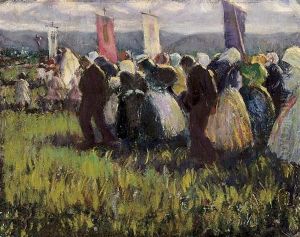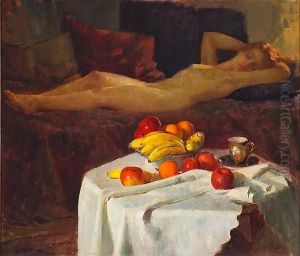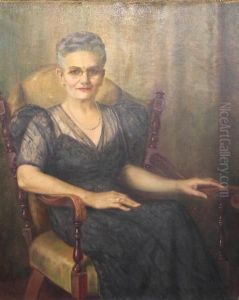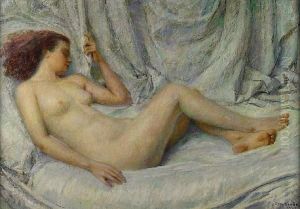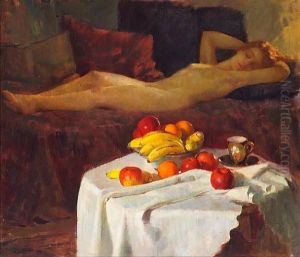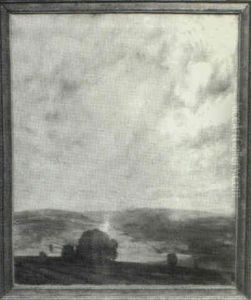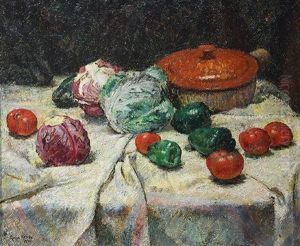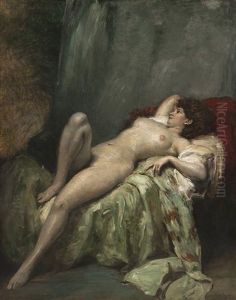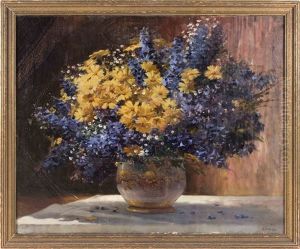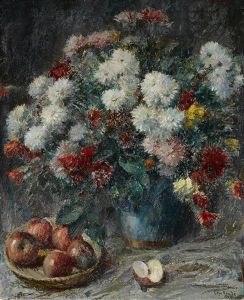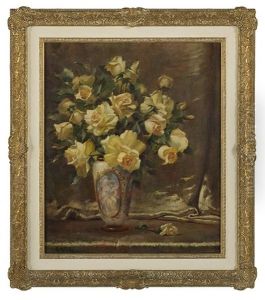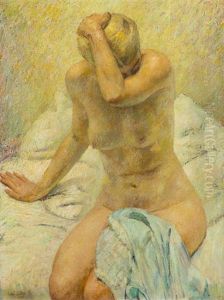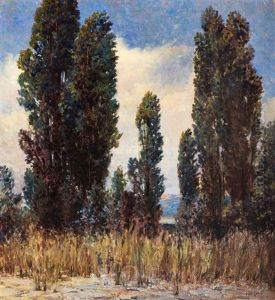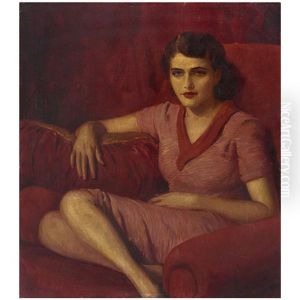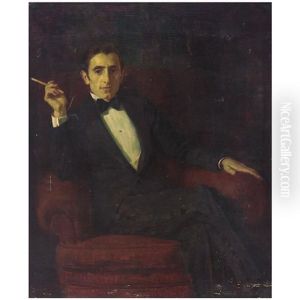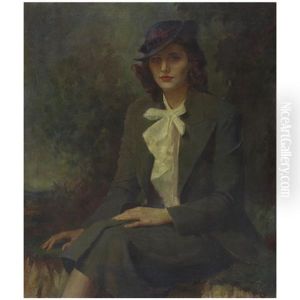Geza Kende Paintings
Geza Kende was a Hungarian-American artist known for his versatility in various mediums, including painting, drawing, and printmaking. Born in Hungary in 1908, Kende's early life was shaped by the cultural vibrancy of Budapest, where he was exposed to a rich artistic heritage. He began his formal education in the arts at the Royal Academy of Fine and Applied Arts in Budapest, where he honed his skills and developed a solid foundation in the traditional techniques of painting and drawing.
Kende's early work was influenced by the European academic tradition, but he was also receptive to the modern movements that were emerging at the time, such as Expressionism and Cubism. However, his career trajectory was interrupted by the political turmoil of the 20th century. The rise of authoritarian regimes in Europe during the 1930s and the outbreak of World War II had a profound impact on many artists of the era, including Kende.
In the wake of World War II, Kende, like many other European artists, sought refuge and new opportunities in the United States. He immigrated to America, where he would spend the majority of his career. The change in environment and the dynamic art scene in the U.S. influenced his artistic evolution, as he began to incorporate elements of American modernism into his work. Kende's style became more eclectic, reflecting the diversity of influences he encountered in his adopted country.
Throughout his career in the United States, Kende exhibited his work extensively, and his paintings were recognized for their vibrant color palette and dynamic compositions. While he may not have achieved the same level of fame as some of his contemporaries, his work was well respected within artistic circles and collected by those who appreciated his unique blend of European tradition and American innovation.
Kende continued to paint and create art until his later years, leaving behind a body of work that reflects the transitions and migrations of an artist who lived through some of the most tumultuous times of the 20th century. He passed away in 1992, leaving a legacy that is remembered by art historians and collectors who value the cross-cultural contributions of immigrant artists to the American art scene.
